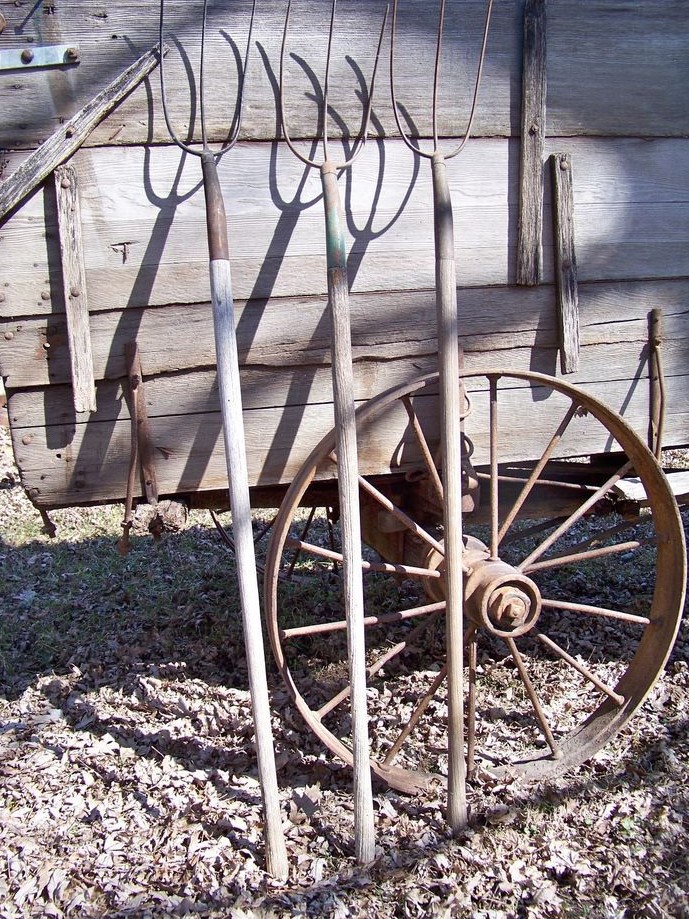
The
Right Tool By Mary Tesdahl

|
We might think that having tools specially designed for a particular job is a new thing, but this has long been the case. Farmers had a variety of forks depending on the task. The three tined fork was for loose hay or straw. The loose hay was light. Sometimes a four tined fork was used for this purpose. A five tined fork was for manure. Pitching manure was a much heavier task and required a heavier tool. A two tined fork was for picking up bundles when threshing. A silage fork was closer to a shovel and had a shovel handle at the top. The tines on this tool had teeth closer together. The weight and strength of the fork was matched to the task for which it was needed. A potato fork was shorter and had flat tines so it would be more likely to get under potatoes than spear them. Shovels were also designed for a specific purpose. A manure shovel had sides so manure would not run off. It was just the right size to fit down into the gutter that ran behind the cows. It was heavy metal because manure was heavy. A scoop shovel was lighter material because grain needed to be lifted higher. Edges were sloped and it was fairly wide. There were even small shovels designed for getting ashes out of a fireplace or woodstove. One especially unique piece of equipment was the chicken waterer. Fresh water is very important for all animals so smaller amounts of water that could be replenished more often was best. For baby chicks, this was accomplished with a fruit jar with a special attachment that allowed water to come out as the chicks drank. Before electricity, a larger version of this watered the hens. The supply tank was like a pail with a lip around the bottom. There was a hole that allowed water out when the level lowered and a spring that was closed until the lid forced it open. The top of the waterer slipped down over the tank. Only as the chickens drank the water so it was below the air hole did more water flow out. As children got old enough to carry a bucket of water from the pump, keeping the waterer full would be an early chore. Another unique piece of equipment was a silage knife. It again had a spade top and teeth at the bottom like the sickle on a mower. Even the sides of the teeth were serrated so it could cut through silage, which might be frozen in the silo. These are the kinds of details Heartland Museum [Clarion, Iowa]shares through their exhibits. If you want a warm activity on a cold day, call and visit
Heartland. Think about donating items or money that will be used to keep this
special point of community pride healthy and growing.
|